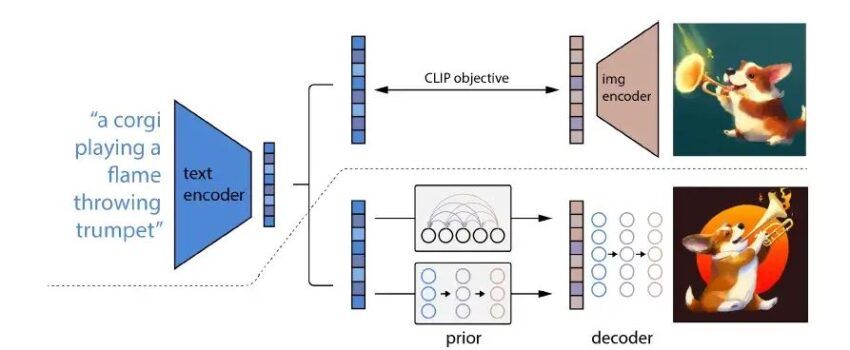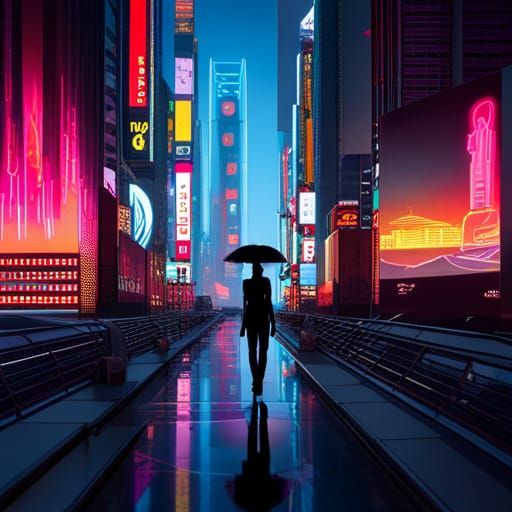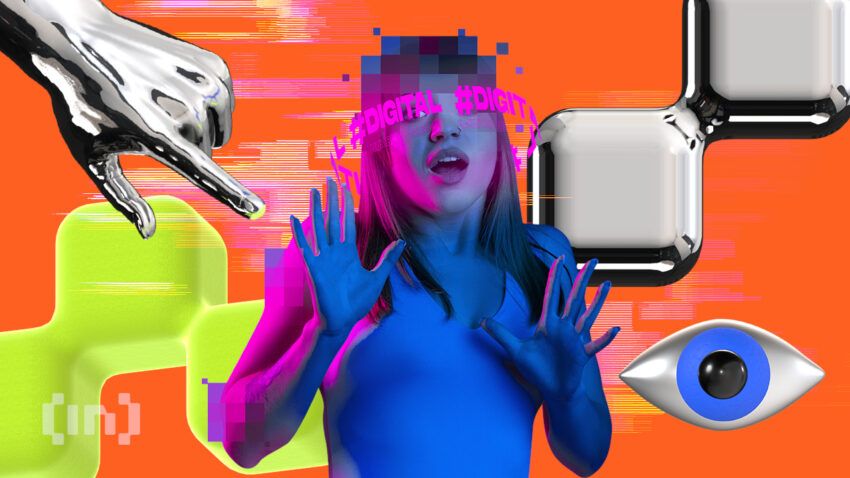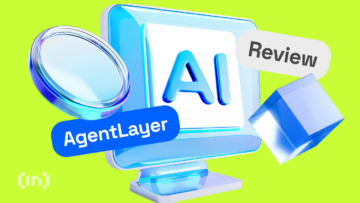From sprucing up social media avatars to creating jaw-dropping fashion designs, AI art is painting magic everywhere. Video games now boast landscapes birthed by algorithms, while advertisers tap into AI’s creative prowess for eye-catching campaigns. It’s clear AI art is making waves across the board. But what is AI art, and how does it work? This guide explores how AI art is reshaping the visual landscape.
Most popular AI Generator 2023
ChainGPT NFT Generator
Wombot AI Image Generator
What is AI art? The good and the bad
AI art isn’t just another brushstroke in the digital art world. With AI art, you feed prompts (text-based instructions) into an artificial intelligence-powered generator tool, which then creates new and unique artwork based on those instructions.
These tools (AI art generators) leverage the power of algorithms and machine learning to create, tweak, and/or mimic existing images. While AI can create these images independently, it’s your unique human touch, working in tandem with machine precision, that brings the artwork to life.
Take generative art, for instance. Here, machine learning algorithms produce super unpredictable visuals. The user might set some ground rules for the AI to build on or let it go wild with its own “creative process” (if we can call it that).
Then there’s style transfer, the mix-and-match fashion run by neural networks. For perspective, think of borrowing the style of a Van Gogh painting and draping it over a photograph of a cityscape to create a mesmerizing blend that’s both familiar and novel.

So, it goes without saying that with all its rich potential, AI art is pushing the envelope constantly. It is redefining the boundaries of creativity we are accustomed to, thereby creating exciting frontiers teeming with possibilities and fresh avenues for expression.
However, as with any other groundbreaking tech, AI art brings challenges. As AI increasingly defines a place in the creative world, conversations about the artist’s role and the essence of intellectual property rights in digital art space are brought to the fore. You might wonder, where does the artist’s influence end and the machine’s begin? And who truly owns the art? Unfortunately, there are no clear and objective answers yet.
AI Art vs. traditional art: What separates them?
At the heart of it, traditional art is human-centered. It can be a raw outpouring of our feelings, memories, and vibes. Each stroke, sculpted line, and musical note reflects passion and imagination. Art is usually a cocktail of the artist’s roots, life stories, and emotions, all splashed into their unique creation.
AI art, on the other hand, is generated through algorithms and machine learning models. While these algorithms can be designed and fine-tuned by humans, the actual creation process is carried out by the machine.
Here’s what separates the two:
- Inspiration: While artists might get their mojo from heartbreak or a sunset, AI’s muse is cold, hard data. You could consider it the difference between cooking with “love” and following a recipe to the letter.
- Consistency: Think of traditional art as that one-off, legendary live concert performance — it’s hard to replicate with the same magic. AI, especially in text-based tasks, can consistently belt out the same tune. Text-to-art AI tools like DALL-E 2.0 can improvise, meaning you give it a theme, which might riff differently each time. Still, within certain bounds, it’s more predictable than human spontaneity.
- Feelings: An AI doesn’t sob into its canvas after a bad breakup. It doesn’t “feel” – it processes. Traditional art, meanwhile, is often like raw emotions smeared on a canvas.
- Evolution and learning: AI tools can learn and evolve. If an AI art tool is designed to learn from feedback, it can refine its creations over time, potentially leading to more sophisticated or appealing outputs.
- Versatility: While traditional artists often specialize in certain styles or mediums, an AI can be trained on multiple styles and can switch between them or even blend them seamlessly.
- Intent: Traditional art often (although not always) starts with an intent or a message the artist wants to convey. AI doesn’t have intent in the human sense. It generates art based on patterns it recognizes in the data.
How does AI create artwork?
Creating artwork through artificial intelligence involves a fascinating interplay of algorithms and data. Different AI models, such as diffusion models and Generative Adversarial Networks (GANs), have emerged as powerful tools for generating various forms of artistic content. Without getting into the technical nitty-gritty, let’s quickly dive through what these models are and how they operate.
Diffusion models
Diffusion models work on the idea of gradual enhancement. They don’t just whip up an image instantly; they start with a basic structure and refine it incrementally. The process is similar to how sculptors practice their art — i.e., beginning with a chunky block and carving until a detailed piece of art is formed.
These are a distinct class of generative models that simulate a random diffusion process to transform simple data distributions — like Gaussian noise — into intricate ones, say, images of animals. The idea is inspired by the physics of diffusion, where particles spread out over time.

Here’s how it works:
- It begins with a sample from your target data — for instance, an image.
- Then, it proceeds to introduce noise to this sample gradually. Each iteration becomes more chaotic until it mirrors a straightforward, known distribution, like Gaussian noise. This is known as the “forward process.”
- The diffusion model’s main task is to play this process in reverse. Starting with our simple, noisy sample, the model denoises and recaptures the original data. The training wheel for a diffusion model largely depends on the optimal denoising function for each reconstruction step. Neural networks often come into play here. Once fully trained, the model can produce new samples, initiating with mere noise and using the honed denoising maneuvers.
Generative Adversarial Networks (GANs)
Picture two neural networks: one generating art and the other critiquing it — that’s Generative Adversarial Networks in its simplest form. The first network is called the generator, while the other is called the discriminator. These two mutually dependent and collaborating networks work in tandem, with each pushing the other to perfection.
- Generator: Its role is to create images. It starts by generating images from random noise. Over time, as it gets feedback from the discriminator, it refines its outputs to produce more realistic images.
- Discriminator: Its job is to distinguish between real images and the fake images produced by the generator. It provides feedback to the generator about the quality of its generated images.
The training process involves the generator trying to produce increasingly realistic images while the discriminator becomes better at distinguishing between real and AI-generated images. The objective is to ultimately have the generator create images so convincing that the discriminator can’t tell them apart from real ones.
Neural Style Transfer (NST)
You could think of NST as the ultimate art blender. It captures the essence of one image and merges it with the style of another. The technique is rooted in deep neural networks, optimizing an image to match the content features of one and the style features of another.
It’s a technique that allows for a harmonious fusion of content and iconic art styles, which then offers a fresh perspective on familiar visuals.
Variational Autoencoders (VAEs)
VAEs operate in the realm of possibilities. They grasp the core characteristics of a set of images and then produce new ones that echo those traits. By navigating their intricate spaces, artists can produce unique visuals, each echoing a hint of the original inspiration.
The creation of a latent space, where different points correspond to variations in the generated content, allows artists to guide the generation process and explore novel artistic possibilities.
Ethical implications of AI art

The rise of AI-generated art, with programs like DALL·E 2, Stable Diffusion, and DragGAN leading the charge, has sparked off several ethical and legal dilemmas surrounding ownership and copyright, among other concerns. Some of these include:
The ownership and copyright conundrum
AI-generated art challenges traditional notions of authorship. For instance, while the UK’s Copyright, Designs and Patents Act 1988 acknowledges computer-generated works, it ambiguously states that the author is the person who makes the “arrangements necessary for the creation of the work.”
— UK Copyright Designs and Patents Act 1988 [Section 9(3)]
This raises questions: is the author the individual who inputs the prompt into the AI? Or is it the developer who trained the AI? For instance, DALL·E 2’s terms of use indicate that users own their prompts and the resulting images, but the broader legal interpretation remains uncertain.
Originality and personality
The Court of Justice of the European Union (CJEU) posits that works are protected if they are their “author’s own intellectual creation.” This implies that the work should reflect the author’s personality. Can AI, devoid of human emotions and consciousness, possess a personality? If the AI’s output doesn’t reflect any “personality,” can it be copyrighted?
Infringement concerns
AI models like DALL·E 2 are trained on vast datasets, which likely include copyrighted images. This presents potential infringement issues. For instance, if DALL·E 2 produces an image resembling copyrighted characters or styles, it could infringe on existing copyrights. Moreover, there’s no guarantee from AI providers that the generated images are free from copyright claims.
Overall, there is a growing call within the creative and legal communities for updated legal frameworks to address AI-generated content. Several countries are contemplating permitting data mining for a diverse range of purposes, potentially influencing the training of AI models. Furthermore, as AI continues to evolve, there might be a push toward recognizing AI as a distinct legal entity.
Taking all these factors into account, AI art holds transformative potential. But it also brings along a complex web of ethical and legal challenges. Clearer regulations and a deeper understanding of AI’s capabilities are essential to navigate these issues.
Is AI-generated art real art?

The answer ultimately depends on how you define art. It’s true that AI art generators create art through algorithms and neural networks. There is no heart and soul out to pour into a digital canvas. But then, while these AI tools don’t have heartbeats or tear ducts, it doesn’t mean that AI-generated art can’t ignite a spark of inspiration. And that adds more to the complexity of the question — after all, isn’t stirring emotions and kindling imagination the hallmark of genuine art?
Will connoisseurs and art enthusiasts be as eager to invest in a piece, knowing its origins lie in algorithms and not human passion? The essence of art has always been its ability to evoke emotion — can AI-generated art truly resonate in the same way? While we may not yet be crowding into opening exhibitions of AI art generators, these tools are certainly being used in corporate arenas.
The future of AI art: Dawn or dusk for creativity?
AI art generators are the artist, the paintbrush, and the canvas all rolled into one. Of course, these programs don’t have personal preferences, don’t brainstorm with peers, and certainly don’t pour their hearts into generated art.
While historically, artists have wielded tools, with AI, now, the tools seem to wield themselves. Is this the ultimate uncoupling of art from artists? With all these factors combined, the future of AI in art appears difficult to predict. Ultimately, the future of AI in art depends on its evolution and integration. With mindful development and use, AI could bring forth a new renaissance in the art industry and beyond.
Frequently asked questions
How does AI create artwork?
Is AI-generated art real art?
How do you identify AI art?
Trusted
Disclaimer
In line with the Trust Project guidelines, the educational content on this website is offered in good faith and for general information purposes only. BeInCrypto prioritizes providing high-quality information, taking the time to research and create informative content for readers. While partners may reward the company with commissions for placements in articles, these commissions do not influence the unbiased, honest, and helpful content creation process. Any action taken by the reader based on this information is strictly at their own risk. Please note that our Terms and Conditions, Privacy Policy, and Disclaimers have been updated.




